Month: April 2024
Why Are Double Roller Extrusion Granulators Ideal for Small-Scale Farmers?
In the field of agriculture, the significance of effective fertilization cannot be overstated. Especially for small-scale farmers, the battle includes a range of issues from scarce resources to the urgent demand for sustainable methods. The adoption of proficient fertilization approaches plays a pivotal role for these farmers, significantly affecting both the yield and quality of their crops. In their journey to overcome these obstacles, finding the right equipment to aid their efforts is of utmost importance.
Benefits of Double Roller Extrusion Granulation Technology
Among the assortment of granulation techniques available, double roller extrusion granulation distinguishes itself through its simplicity and efficiency. This method executes the dry granulation of powder-like materials by forcing them through two rotating rollers that move in opposite directions, compressing the material into a dense form. The outcome is compact, evenly sized granules that ensure a consistent spread across farmlands.
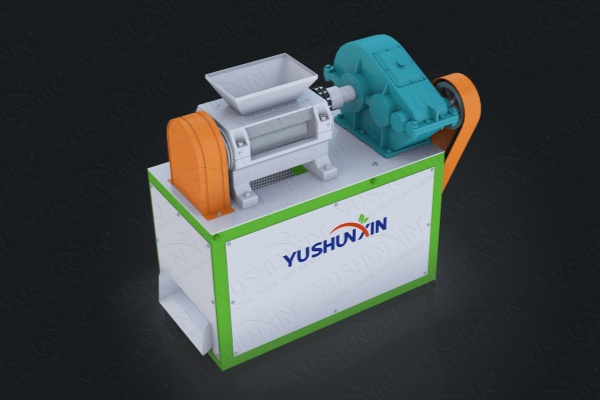
1TPH Model Double Roller Press Granulator
Why Are Double Roller Extrusion Granulators Ideal for Small-Scale Farming?
For small-scale farmers, machinery that is both efficient and simple to operate and maintain is crucial. Double roller extrusion granulators meet these needs by providing an easy-to-use solution with fewer moving components. This leads to decreased maintenance needs and a minimized risk of operational interruptions. Additionally, their granulation process eliminates the need for liquid binders, presenting a cost-effective and cleaner option for farmers operating with restricted resources.
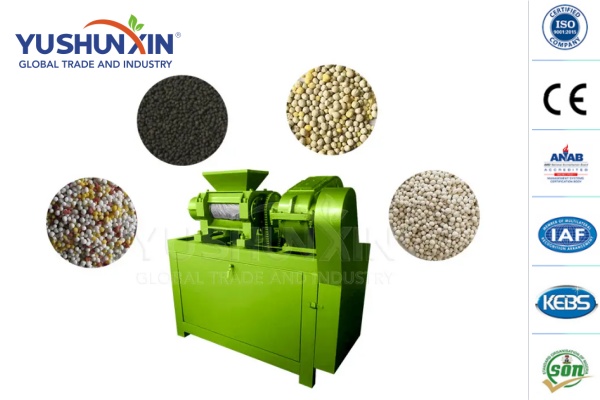
2T-H Roller Compact Granulator for NPK Pellets
The Role of Raw Material Flexibility in Farming Efficiency
One of the key features of a good granulation system is its ability to handle a variety of raw materials. Small-scale farmers often have access to diverse organic matter that can serve as fertilizer, including animal manure, agricultural waste, and compost. A granulator that can process these materials into a uniform product helps farmers utilize locally available resources, thus reducing dependency on commercial fertilizers and promoting a more sustainable approach to agriculture.
Yushunxin’s Approach to Empowering Small-Scale Farmers
Among manufacturers of granulation equipment, Yushunxin has tailored its double roller press granulator to meet the needs of small-scale farmers. By understanding the unique challenges faced by these agricultural practitioners, Yushunxin has designed a machine that emphasizes ease of use, maintenance simplicity, and versatility in handling various raw materials.
Features of Yushunxin’s Roller Compact Granulator
The Yushunxin roller extrusion granulator comes equipped with features that ensure reliability and effectiveness. Its robust construction minimizes wear and tear, while the precision-engineered rollers guarantee a consistent granule size. This results in more accurate application rates and efficient use of materials. Additionally, the granulator operates with low energy consumption, keeping operational costs down for farmers.
Environmental Benefits of Using Yushunxin Granulators
In the current agricultural climate, the emphasis on eco-friendly practices is paramount. The double roller compact pelletizer aligns with these values by facilitating the use of organic materials in the granulation process. This not only reduces the carbon footprint associated with synthetic fertilizers but also improves soil health through the incorporation of organic matter.
Conclusion
In conclusion, for small-scale farmers looking to improve their fertilizer application techniques and embrace a more sustainable farming model, the Yushunxin’s granulator presents an ideal solution. With its combination of efficiency, durability, and environmental benefits, this piece of equipment stands as a wise investment for those aiming to optimize their agricultural operations. You can visit: https://www.extruder-granulator.com/double-roller-extruder-granulator/
NPK Fertilizer Production Line Process
In the realm of agriculture, the term NPK is synonymous with growth and fertility. NPK stands for Nitrogen (N), Phosphorus (P), and Potassium (K), three crucial nutrients that plants need to thrive. An NPK fertilizer production line is a system that combines these elements into a single, balanced fertilizer, providing a complete nutrient package for various crops. In this blog, we’ll delve into the world of NPK fertilizer preparation, outlining the process, equipment, and benefits of this essential agricultural resource.
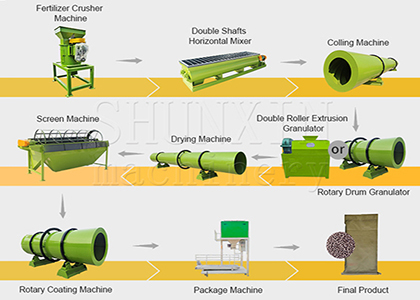
NPK fertilizer manufacturing equipment for sale
The NPK Fertilizer Production Process
NPK fertilizer manufacturing process is sophisticated, involving several key steps to ensure a quality product.
1.Raw Material Batching:The production line begins with the accurate batching of various raw materials that provide nitrogen, phosphorus, and potassium. Ingredients like ammonium nitrate, urea, ammonium chloride, ammonium sulfate, monoammonium phosphate, diammonium phosphate, potassium chloride, and potassium sulfate are commonly used.
2. Material Mixing:Once measured, the raw materials are thoroughly mixed to create a homogeneous blend. Uniform mixing is crucial as it ensures that each granule contains the same NPK ratio. So you can make quality npk compound fertilizer.
3. Granulation:The mixed materials then enter a npk fertilizer granulator. The choice of granulation technology – drum, extrusion, or pan granulation – depends on the specific production requirements. This step is critical as it affects the size, shape, and texture of the final product.
4. Drying and Cooling: The granules are then dried to reduce moisture content, which enhances their stability and storage life. A rotary drying machine is typically used for this purpose. After drying, the granules are cooled to room temperature to prevent caking. The cooling process usually employs a rotary cooler.
5. Screening:Post-cooling, the granules are screened to separate the correctly sized particles from the over-sized or under-sized ones. The latter are often crushed and recycled back into the production line. This the the key to production of npk fertilizer with uniform size.
6. Coating:To improve the physical properties of the granules, such as moisture resistance and shelf life, a coating agent is applied.
7. Packaging:The final step involves packaging the NPK fertilizer into bags for distribution and sale. Automated packing machines ensure precision and efficiency in this process.
Equipment: The Backbone of Production
The heart of the NPK fertilizer production line is the NPK fertilizer equipment. Each step requires specialized machinery designed for high efficiency and accuracy. Robust construction and adaptability to different raw materials are essential features of this equipment. Modern production lines also incorporate advanced controls and automation to optimize the entire process and reduce manual labor. Click here to learn more.
The Benefits of NPK Fertilizers
NPK fertilizers are invaluable for modern farming practices. They provide a balanced nutrient supply, promoting healthier plant growth and increasing yields. Custom NPK formulations allow for targeted applications based on soil type and crop requirements. Furthermore, NPK fertilizers enhance the soil’s nutrient-holding capacity, improving its long-term fertility. If you want to make NPK fertilizer , you can visit https://www.fertilizerbusinessplan.com/how-to-prepare-npk-fertilizer/
Sustainability and Environmental Considerations
As the demand for food rises, so does the need for sustainable farming practices. NPK fertilizer production lines must incorporate environmentally friendly techniques, reducing waste and emissions. Precision in the formulation and application of NPK fertilizers also minimizes nutrient runoff, which can lead to water pollution.
Conclusion
An NPK fertilizer production line is a strategic investment in the future of agriculture. It ensures the delivery of high-quality, nutrient-rich fertilizers that support sustainable farming and food security. With the right equipment and process management, an NPK production line can be both an environmentally responsible and economically viable venture for those looking to make a meaningful impact in the agricultural sector.
How to use rotary drum granulator to make npk fertilizer
Rotary drum granulator is a versatile and efficient machine used in the production of NPK fertilizer. NPK stands for nitrogen, phosphorus, and potassium, which are essential nutrients for plant growth. This type of granulator is commonly used in large-scale fertilizer production plants due to its high output and ability to produce uniform and well-rounded granules. In this passage, we will discuss the steps on how to use a rotary drum granulator to make NPK fertilizer.
Preparation of Raw Materials
Before using the rotary drum granulator, it is essential to prepare the raw materials. The raw materials for NPK fertilizer production include urea, ammonium sulfate, monoammonium phosphate, diammonium phosphate, and potassium chloride. These materials should be crushed into fine powder and mixed in the right proportions to achieve the desired NPK ratio.
Feeding the Raw Materials
Once the raw materials are prepared, they should be fed into the rotary drum granulator. The granulator is equipped with a feeding system that allows for the continuous feeding of the raw materials. The feeding system should be adjusted to ensure that the materials are evenly distributed inside the granulator.
Granulation Process
The granulation process begins as the raw materials are mixed and tumbled inside the rotating drum granulator. The drum is lined with rubber or plastic to prevent the materials from sticking to the walls. As the materials are tumbled, they begin to form granules due to the rolling motion and the addition of a binder, such as water or a liquid fertilizer. And it can make 1-30 t/h npk fertilizer.
Drying and Cooling
After the granulation process, the granules are still wet and need to be dried. The rotary drum granulator is usually equipped with a drying system that uses hot air to remove the moisture from the granules. Once the granules are dry, they are cooled using a cooling system to prevent them from sticking together during storage and transportation.
Screening and Packaging
The final step in the production of NPK fertilizer is screening and packaging. The granules are passed through a screening machine to separate the oversized and undersized granules from the desired size. The oversized granules can be crushed and returned to the granulator, while the undersized granules can be used as a powder fertilizer. The final product is then bagged in bags or bulk containers for distribution.
In conclusion, using a rotary drum granulator to make NPK fertilizer is a straightforward process that involves the preparation of raw materials, feeding, granulation, drying, cooling, screening, and packaging. With the right equipment and proper operation, a rotary drum granulator can produce high-quality NPK fertilizer that can help improve crop yields and soil health.
Производственная линия для наполнителя для кошачьих туалетов большой мощности с вращающимся барабаном
В связи с быстрым развитием индустрии домашних животных, спрос на наполнитель для кошачьих туалетов постоянно растет, так как это необходимый товар для повышения качества жизни питомцев. Как профессиональный производитель оборудования для удобрений, мы успешно расширили наши технологические знания и производственные навыки до сферы производства наполнителей для кошачьих туалетов, особенно в отношении дизайна и изготовления производственной линии с вращающимся барабаном большой мощности.
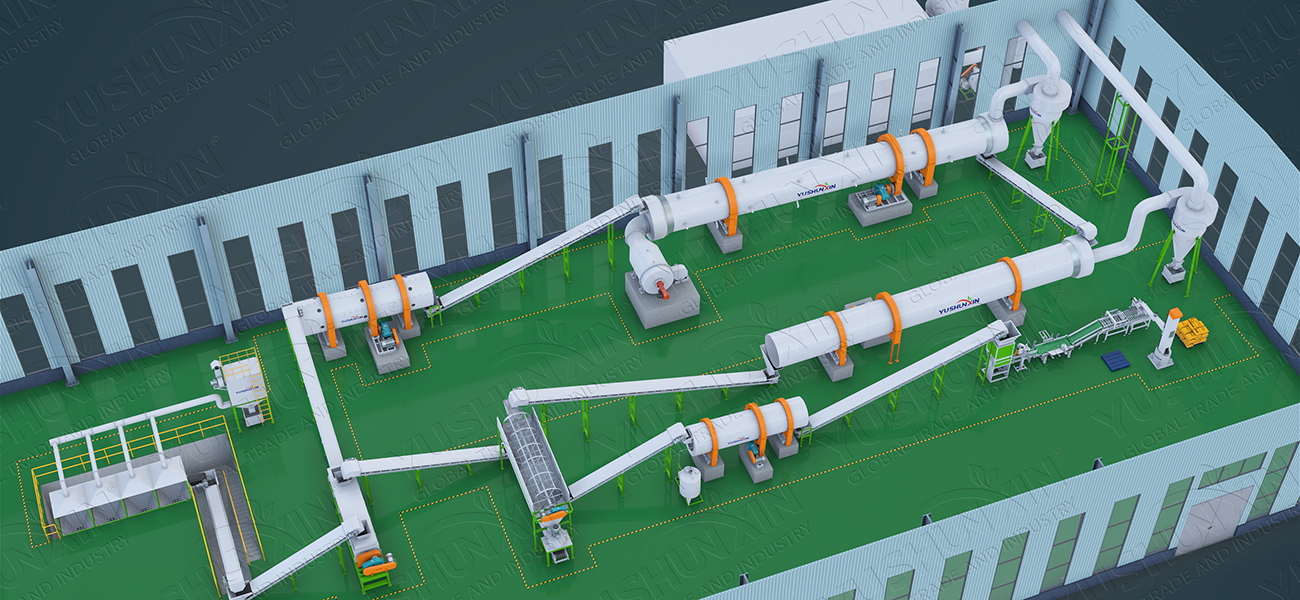
Линия грануляции с вращающимся барабаном
**Обзор производственной линии**
Производственная линия для наполнителя для кошачьих туалетов большой мощности – это высокоэффективная система, использующая передовую технологию вращающегося барабана для смешивания, гранулирования и сушки сырья, что позволяет создать наполнитель высокого качества. Эта линия характеризуется большой производительностью, высоким уровнем автоматизации, низким потреблением энергии и простотой управления, и может удовлетворить потребности рынка в различных типах наполнителя для кошачьих туалетов. Дизайн линии позволяет работать с различными типами сырья, включая натуральную глину, опилки, наполнитель из сои и из бумаги.
**Ключевые технологии и оборудование**
1. **Технология вращающегося барабана**: Вращающийся барабан является ключевым элементом линии, отвечающим за смешивание сырья, гранулирование и первичную сушку. Внутренняя стенка барабана имеет специальные полировочные и смешивающие устройства, обеспечивающие однородность размеров гранул и предотвращающие прилипание сырья к стенкам.
2. **Система автоматического управления**: Вся производственная линия контролируется с помощью передовой системы автоматического управления, позволяющей непрерывно следить и автоматически регулировать процесс производства для обеспечения качества продукции и производственной эффективности.
3. **Оптимизация энергопотребления**: При дизайне производственной линии мы уделяем особое внимание оптимизации использования энергии. Например, с помощью технологии теплообмена мы восстанавливаем тепло из процесса сушки, чтобы сократить потребление энергии.
4. **Экологический дизайн**: Наша линия для производства наполнителя для кошачьих туалетов соответствует экологическим нормам, система обработки отходящих газов эффективно фильтрует и очищает пыль и вредные газы, возникающие в процессе производства.
**Производственный процесс**
Процесс производства начинается с предварительной обработки сырья, включая очистку, измельчение и просеивание, чтобы гарантировать качество сырья. Затем сырье поступает во вращающийся барабан, где добавляются связующие и другие необходимые добавки для смешивания и гранулирования. После гранулирования наполнитель отправляется в систему сушки для удаления излишней влаги. Наконец, наполнитель охлаждается, просеивается для удаления некачественных продуктов и упаковывается в готовую продукцию.
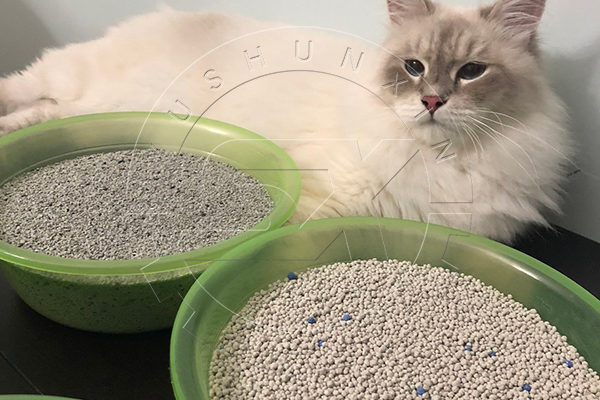
бентонитовый гранулированный наполнитель для кошачьего туалета
**Преимущества на рынке**
– **Высокая производительность**: удовлетворяет потребности в массовом поставке наполнителя для кошачьих туалетов, приспосабливается к изменениям на рынке.
– **Надежное качество**: автоматизация управления и точный дизайн оборудования обеспечивают стабильное качество производимого наполнителя.
– **Энергосбережение и экологичность**: снижение потребления энергии в процессе производства позволяет уменьшить производственные затраты и соответствовать экологическим требованиям.
– **Техническая поддержка и сервис**: Мы предлагаем полный пакет технической поддержки и послепродажного обслуживания, чтобы наши клиенты могли быстро и эффективно решать любые возникающие в процессе производства проблемы.
Как лидирующий производитель оборудования для удобрений, мы всегда стремимся к инновациям и улучшению производственной эффективности, применяя наши профессиональные знания в дизайне и изготовлении производственных линий для наполнителя для кошачьих туалетов, чтобы удовлетворить глобальные рыночные потребности. Наша цель – предоставлять клиентам продукцию и услуги высочайшего качества и быть надежным партнером в индустрии товаров для домашних животных. Для получения дополнительной информации, пожалуйста, посетите:https://www.sxmashina.com/proizvodstvo-bentonitovykh-napolniteley-dlya-koshachikh-tualetov/
What machines can make phosphate fertilizer
The production of phosphate fertilizers is a complex process that involves several steps and the use of various machines to transform raw phosphate rock into a usable product for agriculture. The primary objective of this process is to increase the availability of phosphorus for plant uptake, which is an essential nutrient for plant growth. Below, we will discuss the different types of machines that are instrumental in the production of phosphate fertilizers.
Mining Equipment: Extracting Phosphate Rock
Sub-surface Mining Machines
Phosphate rock is often extracted through sub-surface mining, which requires the use of specialized machines such as continuous miners and longwall mining equipment. These machines are designed to remove large quantities of overburden and phosphate-bearing ore from beneath the earth’s surface.
Draglines and Excavators
In other instances, open-pit mining techniques are employed, where draglines and hydraulic excavators are used to remove the overburden and extract the phosphate rock. These machines have large buckets that can remove significant amounts of earth in a single scoop, making them efficient for the task.
Milling Equipment: Processing Phosphate Rock
Crushers and Grinders
Once the phosphate rock is extracted, it must be processed to be converted into a form that can be used by plants. This begins with crushing and grinding the rock in crushers and grinders, which pulverize the raw phosphate to a smaller, more manageable size.
Ball Mills and Rod Mills
After crushing, the material is further processed in ball mills and rod mills, which are types of rotating drums that contain steel balls or rods. These mills work by tumbling the phosphate rock with the steel elements, thereby grinding it down into a fine powder, which is the consistency required for further processing.
Chemical Processing Machines: Producing Phosphoric Acid
Sulfuric Acid Reactors
One of the key steps in producing phosphate fertilizers is the creation of phosphoric acid. This is typically done by reacting the ground phosphate rock with sulfuric acid in large reactors. These reactors are designed to withstand the corrosive nature of sulfuric acid and allow for the controlled reaction between the acid and the phosphate rock.
Flash Coolers and Vacuum Filters
The resulting slurry from the reaction is then cooled and filtered. Flash coolers are used to rapidly cool down the hot slurry, while vacuum filters are employed to separate the phosphoric acid from the gypsum by-product.
Granulation Equipment: Forming Phosphate Fertilizers
Granulators and Drum Agglomerators
To convert the liquid phosphoric acid into solid fertilizer pellets, granulation machines are used. Granulators and drum agglomerators turn the mix of raw materials, including phosphoric acid and additives, into small, uniformly sized granules. The motion of these machines, along with added steam and binders, helps to form the round shape of the fertilizer pellets.
Dryers and Coolers
After granulation, the pellets are dried in rotary dryers to remove any remaining moisture. Subsequent cooling is necessary to strengthen the granules and prevent caking. Cooling is typically done in rotary coolers, which gently reduce the temperature of the fertilizer pellets.
Quality Control and Packaging Equipment
Screeners and Coaters
Before the final product can be packaged, it must be screened to sort the granules by size and ensure uniformity. Oversized or undersized granules are either crushed and re-granulated or discarded. Coating machines may be used to apply a fine layer of oil or other materials to enhance the product’s handling characteristics.
Packaging Machines The final step involves packaging the phosphate fertilizer into bags or bulk containers. Automated packaging machines fill and seal bags with precise amounts of fertilizer, ready for distribution and use on farms.
In conclusion, the production of phosphate fertilizers is a multi-faceted process that relies on a variety of machines, each designed to perform specific tasks from extracting phosphate rock to packaging the final product. The efficient operation of these machines is crucial to ensuring a steady supply of this important agricultural input.
The Role of Fertilizer Making Machines in Manure Waste Management
In the quest for sustainable agriculture, managing manure waste effectively has become a pivotal challenge for farmers worldwide. As environmental concerns escalate, the agricultural sector is under pressure to adopt practices that minimize waste and promote the recycling of resources. Enter fertilizer making machines – the unsung heroes turning the problem of manure waste into an opportunity for nutrient recycling. This blog delves into how these machines are revolutionizing manure waste management through the production of organic fertilizer.
The Problem with Manure Waste
Traditional manure management practices often involve storing waste in lagoons or spreading it directly onto fields. While these methods have their place, they come with environmental downsides, including the potential for water pollution, greenhouse gas emissions, and the inefficient use of manure’s nutrient potential. The challenge, therefore, is to find a way to manage manure that is both environmentally friendly and agriculturally beneficial.
The Solution: Fertilizer Making Machines
Manure fertilizer making machines offer a sustainable solution by converting manure into organic fertilizer, a process that adds value to what is otherwise considered waste. These machines come in various forms, including compost turners, granulators, and pellet mills, each playing a unique role in the fertilizer production process.
1. Composting Turners: The foundation of manure-based fertilizer production is efficient composting. Composting turners aerate piles of manure, accelerating the decomposition process (aerobic fermentation). This not only reduces the volume of the waste but also kills pathogens and seeds, resulting in a hygienic, nutrient-rich compost that’s an excellent soil amendment.
2. Granulators and Pellet Mills: Once composted, manure can be further processed into granules or pellets. Granulators and pellet mills compact the composted material, producing uniform particles that are easy to handle, store, and apply. These processes increase the marketability of the final product, as granulated fertilizers are in high demand for their convenience and effectiveness. Click here to learn more
The Environmental and Agricultural Benefits
The transformation of manure into organic fertilizer via these machines offers numerous advantages:
– Reduced Environmental Impact: By preventing runoff and reducing greenhouse gas emissions, fertilizer making machines mitigate the environmental issues associated with raw manure application.
–Enhanced Soil Health: Organic fertilizers improve soil structure, water retention, and microbial activity, leading to healthier crops and reduced reliance on chemical fertilizers.
– Resource Recycling: This approach exemplifies a circular economy, where waste products are repurposed, reducing the need for synthetic fertilizer production and its associated energy consumption.
– Economic Opportunities: Farmers can turn a cost center (manure management) into a revenue stream by selling organic fertilizer, providing an additional income source and contributing to the local economy.
Overcoming Challenges
Despite these benefits, challenges remain. The initial investment in fertilizer making equipment can be significant, and there is a learning curve associated with mastering the composting and granulation processes. However, with increasing technological advancements and financial incentives, these hurdles are becoming more surmountable. You can get more details on https://www.manuremanagementplan.com/manure-waste-management/
Conclusion
Fertilizer making machines are at the forefront of a movement towards more sustainable agriculture. By transforming manure waste into valuable organic fertilizer, they close the loop in nutrient management and contribute to a healthier planet. As technology advances and awareness grows, the adoption of these machines is set to increase, heralding a new era in manure management and environmental stewardship. So, the next time we think about manure, let’s not see it as a waste problem, but as a resource waiting to be unlocked.

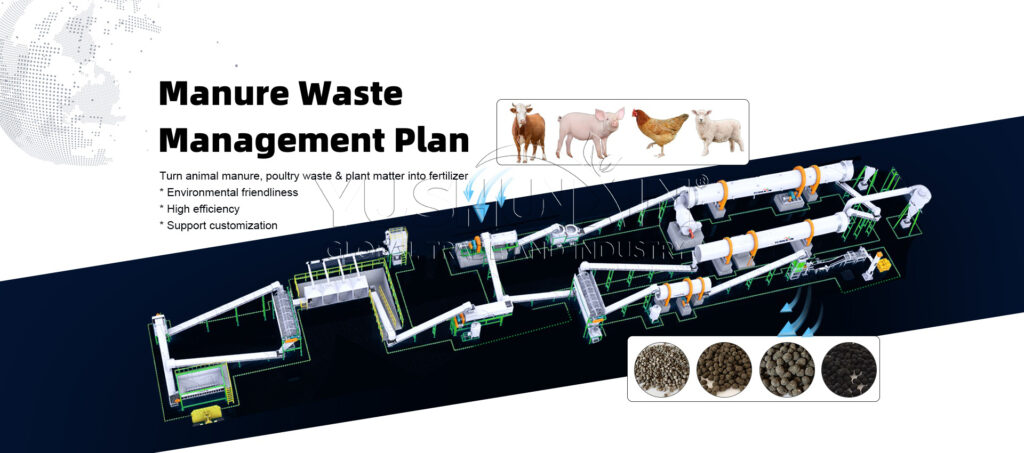
What machine is suitable for composting chicken manure
April 28, 2024
chicken manure composting, Compost Equipment, compost fertilizer production, Composting
Comments Off on What machine is suitable for composting chicken manure
cs
benefits of chicken manure compostingchicken manure composting machine